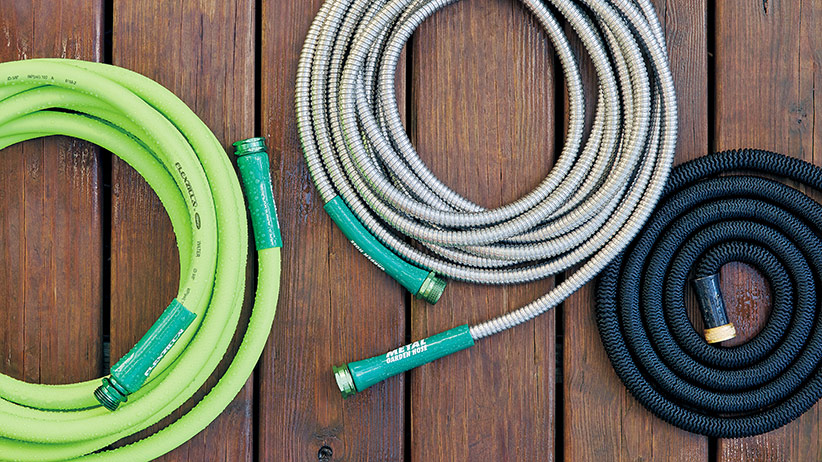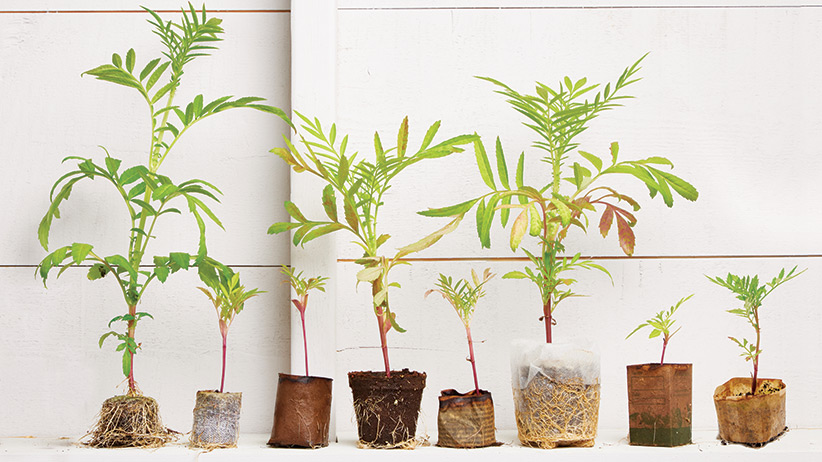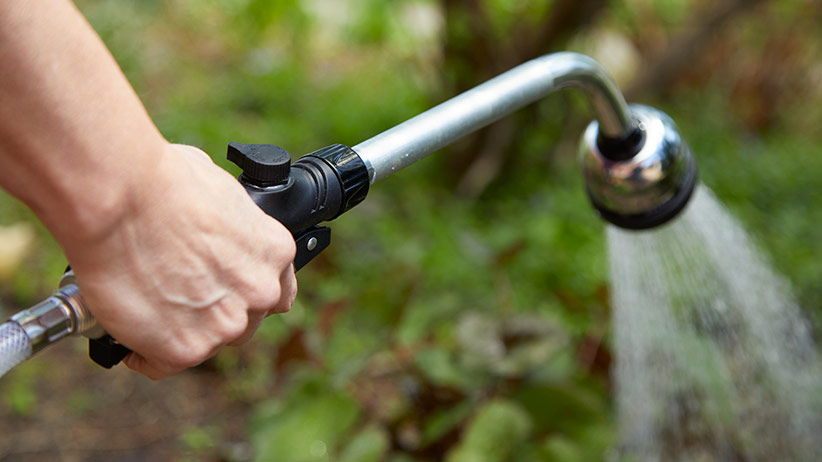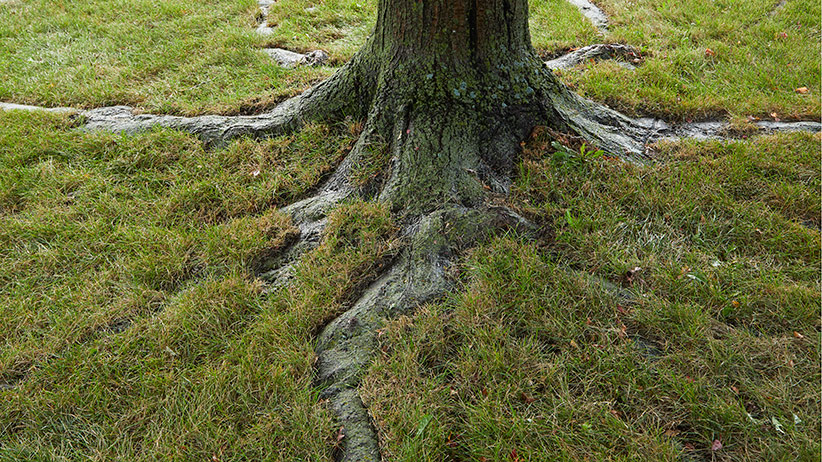Find the right garden hose
It’s such a simple piece of garden equipment: A tube to disperse water. But nothing causes more aggravation! A garden hose that kinks, leaks, is stiff and won’t unwind or is heavy to drag around can be really frustrating. As the corporate gardener for Garden Gate magazine and professional horticulturist, I've used hundreds of hoses over the years made from a wide variety of materials - vinyl, rubber, plastics and even metal - they all have pros and cons. So take a look at all the different types of garden hoses below and check out my secrets to finding one you’ll be happy with and how to care for a garden hose so it lasts for years.
You May Also Like:
How to Water Perennial Plants
Hanging Basket Watering Tips
How to Choose the Right Garden Hoe
What to look for in a garden hose
High quality fittings
You can get inexpensive hoses with aluminum, stamped metal, or plastic couplings, but brass is the most durable. Get the kind of coupling with an octagonal shape so you can use a pliers to loosen the connection if you need to.
Garden hose tips
- If you leave an aluminum coupling connected to a brass faucet too long, a chemical reaction called “galvanic corrosion” may fuse the two metals together and you’ll never get that hose off the faucet. Avoid the problem by disconnecting the hose after each use or using a plastic coupling between the two metals.
- And take good care of your hose ends — don’t drop them on concrete and dent the threads or leave them on the driveway where they might get run over!
Burst pressure rating
Check the packaging for a burst pressure rating above 350 PSI. The higher it is the less likely the hose will spring a leak if someone drives over it while it's full.
Garden hose tip
In regions where freezing is of concern, look for cold weather ratings, too, so you know whether that hose can survive water freezing inside.
Hose helpers
- Use quick connectors to change water wands and sprinklers and attach the hose to the faucet. They save time and wear and tear on the threaded couplings.
- Look for garden hoses with collars at each end to reinforce these zones that are susceptible to tugging and kinking.
- Use rubber washers in the couplings. They last longer than plastic. Always check to see that the washer is not misshapen or cracked — it’s often the reason there’s a leak or a loose connection.
- A hose reel is a great way to store your hose in a way that avoids kinking. Or go for something more decorative like the hose hider in the photo below.

How to care for your garden hose
Kink control
To avoid a kink in your garden hose don’t yank on the end to straighten it out. Instead, walk back to the kink and unfold it so you don’t set the crease or crack the hose. For the same reason, don’t fold or kink the hose to stop the flow of water — turn the water off at the source or with a shut-off valve. Coil up the hose after each use to keep it neat. A larger coil (2 to 3 feet in diameter) leaves the hose more relaxed and less likely to kink when uncoiling.
Proper storage
To put your garden hose away for the season, run water out of it after shutting off the faucet. This way there’s no water inside that could expand and burst in cold winter temperatures. Hang your garden hose on a wide, rounded hanger or reel to prevent kinks. Never use just a nail or single thin hook as these will cause the hose to crease. If you're tired of having to arm wrestle the hose into the garage this handy device is an all-in-one wrangler and storage unit.
Garden hose comparisons
In my quest for the perfect hose, I’ve tried quite a few different materials. Here's what I've discovered.
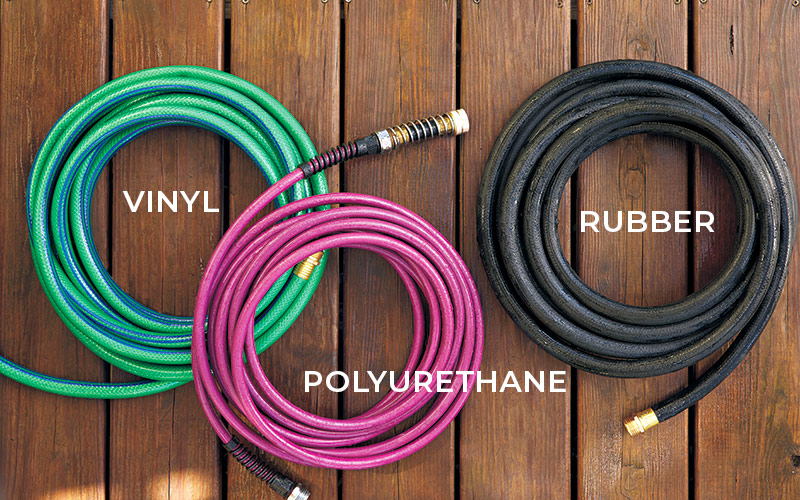
Vinyl hoses
Usually one of the least-expensive hoses, vinyl is often reinforced with cording or nylon mesh in multiple plies to make it strong and durable, so it is good for attaching to sprinklers where you might leave the water turned on all day with a timer. They tend to be stiff and hard to coil, and often kink and rekink in the same spot. I have cursed this kind of hose far more than any other, but it’s a good hose to use in situations where I can leave it strung out in one place — such as to reach a distant bed.
Polyurethane hoses
A polyurethane hose is lightweight to use and doesn’t kink as much but is a bit stiff, so it can be fussy to coil and not as bendable when pulling through the garden. My polyurethane hose has a smaller diameter, so I get less water output — not great on a sprinkler, but so light to haul around that it’s one of my favorites.
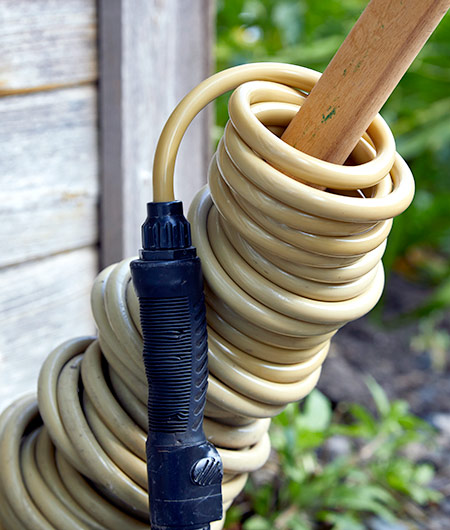
Precoiled polyurethane hoses
Precoiled polyurethane hoses are stretchy and nice to use for quick waterings on a regular basis — on the patio, in a greenhouse or sunroom, by the veggie garden. Don’t store one in a heap or the coils will tangle together. Instead drape it carefully from a hose hanger or try sliding the coils down a length of PVC or a broom handle like you see in the photo to keep a precoiled hose neatly stored.
Rubber hoses
Though heavy, a construction-grade rubber hose has a long lifespan and can take a beating while being pliable and easy to coil. Kinks can be shaken out and don’t usually leave a crease that reoccurs. My favorite black rubber hose will leave scuff marks on concrete, hands and clothes if it rubs too hard, but it washes off.
You Might Also Like:
How to Divide 45+ Perennials
Must-Have Pruning Tools for Gardeners
Drought-Tolerant Perennials
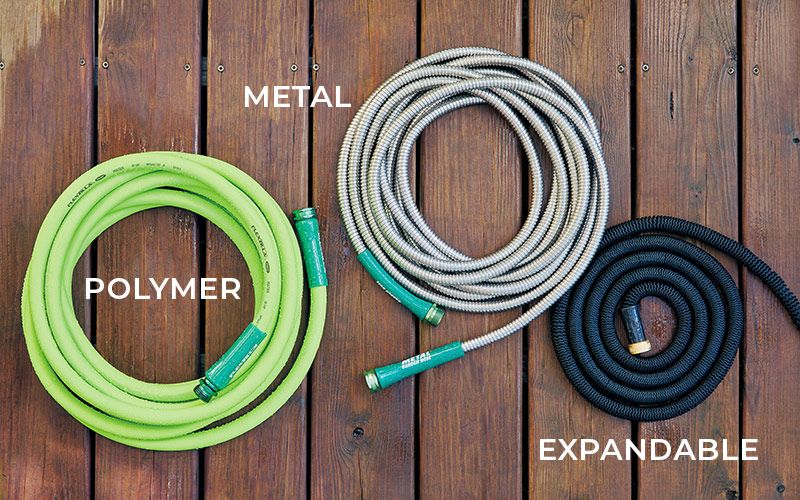
Polymer hoses
Usually drinking water safe, this material is lightweight, soft and flexible, gently curling around plants, pots and corners and coiling easily for storage. My polymer hose kinks like crazy, but the creases don’t set and will unkink with a quick twirl of the end like a jump rope. It coils so easily and is so light that all is forgiven if I unroll it first before using.

Metal hose
I love this metal hose! It’s pricier, but tough, really lightweight, doesn’t kink (though I have managed to twist it up occasionally), I can drag it around and it easily uncoils. If the hose heats up in the sun, it cools quicker than other materials so I don’t waste water running until the water isn’t hot. It will catch on corners or pavement cracks but you can snap it like a whip to dislodge it. Mine has a smaller water output due to the narrower inside hose diameter, but it can power a sprinkler.
Expandable Garden Hose
There are many versions of an expandable hose — usually a rubber tube encased by a durable, stretchy fabric. I admit it seems gimmicky, but I love how light and easy to store mine is — all 100 ft. contracts and fits in a 5-gal. bucket. If you hate coiling your hose when your done using it, you'll love an expandable hose — it basically puts itself away!
Expandable hose tip
You may have heard negative comments about expandable Garden Hose bursting under pressure. I’ve used mine for several seasons and think the key is to get the more expensive version with brass couplings and use it carefully: Turn the water on slowly so there isn’t a burst of water pressure when filling, don’t use shut off valves where water pressure builds in the hose (I let mine run the whole time I use it), drain all water out when finished, don’t drive over them, and store out of heat, sun and freezing temperatures.
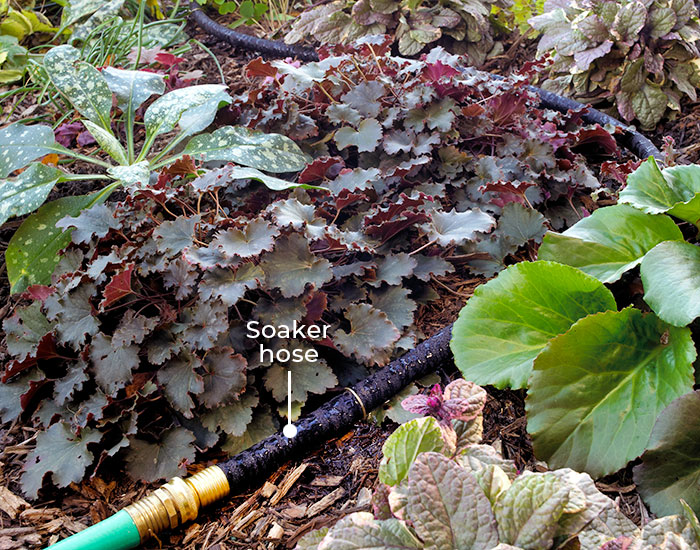
Soaker hoses
The great thing about soakers is that they use a lot less water — up to 70 percent less — than wands or sprinklers. And none of the water is wasted since it’s directed right into the soil near the roots where it’s needed. Once I set a soaker hose in the garden, I leave it in place all season. Turn the faucet on just enough so the entire hose is weeping, but not spraying.
Soaker hose tip
It can take a little practice to know how long to let the hose run. Experiment in your garden by running it for an hour with the faucet on a quarter turn. The next day see if the soil is still moist at least 2 inches down. If the soil’s dry, water again and this time let the soaker run longer or turn the faucet up a bit.



